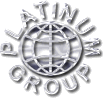Land
and People
Central
Morocco consists largely of the Atlas Mountains, which rise
to 13,671 ft (4,167 m) in Jebel Toubkal in the southwest and
which dominate most of the country. In the south lie the sandy
wastes of the Sahara desert. In the north is a fertile coastal
plain. The population of Morocco is concentrated in the coastal
region and the mountains, where rainfall is most plentiful.
In parts of the Rif Mountains in the northeast some 40 in.
(102 cm) of rain fall each year. There are no important rivers
in the country, but dams on several coastal streams are used
for irrigation and hydroelectric power. The vast majority
of Moroccans are Muslims of Arab-Berber ancestry. There are
also small Christian and Jewish minorities. Arabic is the
official language, but French (often used in business and
government), several Berber dialects, and Spanish are also
spoken. More than half of all Moroccans live in urban areas.
There are universities at Rabat, Fès, Marrakech, and
Casablanca.
|

His Majesty
King Mohammed VI |
Government
Morocco
is a constitutional monarchy and is governed under a 1972
constitution as revised in 1992. The king holds effective
power and appoints the prime minister. The bicameral parliament
consists of a 270-seat chamber of counselors and 325-seat
chamber of representatives. The legal system is based on Islamic
law as well as French and Spanish civil law. Administratively,
the country is divided into 37 provinces and two municipalities.
Morocco is a member of the United Nations and the Arab League.
Economy
Agriculture
employs about half of Morocco's workforce, which suffers from
a high (more than 20%) unemployment rate. In the rainy sections
of the northeast wheat and other cereals can be raised without
irrigation. On the Atlantic coast, where there are extensive
plains, olives, citrus fruits, and wine grapes are grown,
largely with water supplied by artesian wells. Forests yield
cork, cabinet wood, and building materials. Part of the maritime
population fishes for its livelihood. Agadir , Essaouira ,
El Jadida , and Larache are among the important fishing harbors.
Casablanca
is by far the largest port and an important industrial center.
Significant industries include textile and leather goods manufacturing,
food processing, and oil refining. In the northern foothills
of the Atlas Mountains there are large mineral deposits; phosphates
are the most important, but iron ore, silver, zinc, copper,
lead, manganese, barytine, gold, and coal (the only sizable
coal deposits in North Africa) are also found. Marrakech ,
Meknès , and Fès are the most important centers
in the mineral trade. A few oases in southern Morocco, notably
Tafilalt, are all that relieve the desert wastes.
Morocco's
coastal areas and the mineral-producing interior are linked
by an expanding road and rail network, and port facilities
are being further developed. Tourism is important economically,
as are cash remittances from Moroccans working in France.
The main exports are phosphates, clothing, shellfish, citrus
fruits, and vegetables. The chief imports are petroleum, chemicals,
machinery, and plastics. France and Spain are the leading
trade partners.
|

